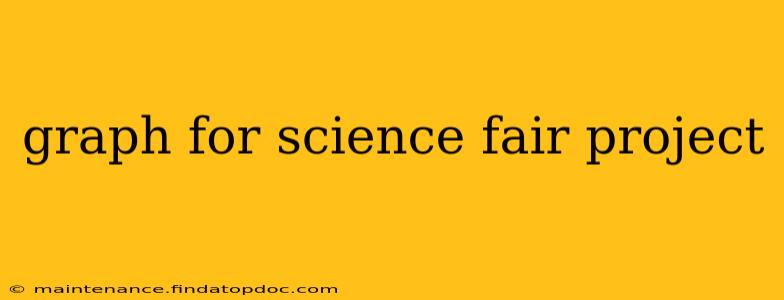Creating a compelling science fair project involves more than just conducting experiments; it's about effectively communicating your findings. A well-chosen and meticulously crafted graph is crucial for visually representing your data and making a lasting impression on the judges. This guide will help you select the best graph type for your science fair project and ensure your data is presented clearly and accurately.
What Type of Data Do You Have?
The first step in choosing the right graph is understanding the nature of your data. Are you measuring a single variable over time? Are you comparing different groups? Are you showing the relationship between two variables? The answer to these questions will dictate the most appropriate graph type.
1. Showing Changes Over Time: Line Graphs
Line graphs are ideal for displaying data that changes continuously over time. They show trends and patterns effectively. For example, if you're measuring plant growth over several weeks, a line graph would be the perfect choice. Each data point represents a measurement at a specific time, and the line connecting the points illustrates the trend.
2. Comparing Different Categories: Bar Graphs (or Column Charts)
Bar graphs (or column charts, depending on their orientation) are best for comparing discrete categories or groups. If you're testing the effectiveness of different fertilizers on plant growth, a bar graph would allow you to visually compare the average growth of plants treated with each fertilizer. Each bar represents a category, and its height corresponds to the value of the data.
3. Showing Proportions or Percentages: Pie Charts
Pie charts are useful for showing the proportion or percentage of each category within a whole. For instance, if you're surveying students' favorite subjects, a pie chart clearly demonstrates the relative popularity of each subject. Each slice represents a category, and its size is proportional to its percentage of the whole.
4. Showing the Relationship Between Two Variables: Scatter Plots
Scatter plots are effective for showing the correlation or relationship between two variables. For example, if you're investigating the relationship between the amount of sunlight a plant receives and its height, a scatter plot would reveal if there's a positive, negative, or no correlation. Each point represents a data pair, and the overall pattern of the points indicates the relationship.
Which Graph is Best for My Science Fair Project? Examples:
Let's look at some common science fair project scenarios and the best graph types to use:
Example 1: The Effect of Different Types of Music on Plant Growth
In this case, you're comparing the growth of plants exposed to different types of music. A bar graph would be ideal. Each bar could represent a different type of music, and the height of the bar would correspond to the average plant height for that music type.
Example 2: The Growth of a Plant Over Time
Here, you're tracking the growth of a single plant over a period of weeks. A line graph is the perfect choice. The x-axis would represent time (weeks), and the y-axis would represent the plant's height.
Example 3: The Percentage of Students Who Prefer Different Colors
This involves determining proportions within a group. A pie chart would clearly display the percentage of students who prefer each color.
Example 4: The Relationship Between Hours of Study and Exam Scores
This explores the correlation between two variables. A scatter plot would be suitable, showing the relationship between the number of study hours and the resulting exam score for each student.
Creating Effective Graphs
Regardless of the type of graph you choose, remember these key principles:
- Clear Labels: Always label your axes (x and y) with clear, concise titles that include units of measurement (e.g., "Plant Height (cm)," "Time (weeks)"). Give your graph a descriptive title.
- Appropriate Scale: Choose a scale that accurately represents your data without distorting the results.
- Consistent Units: Ensure consistent units throughout your graph.
- Neatness and Accuracy: Make sure your graph is neat, accurate, and easy to read. Use a ruler for straight lines and clearly mark data points.
- Legend (if needed): If your graph has multiple data sets, include a clear legend to explain what each line, bar, or slice represents.
By following these guidelines, you can create graphs that effectively communicate your science fair project's findings and make a strong impression. Remember, a well-presented graph can significantly enhance the impact of your project.
